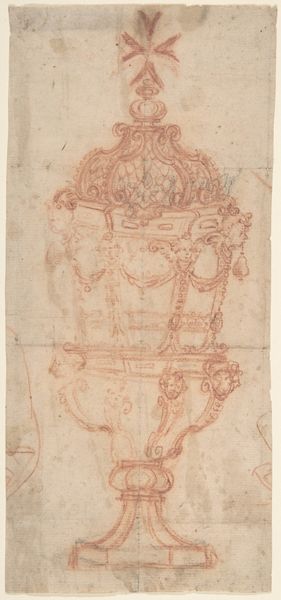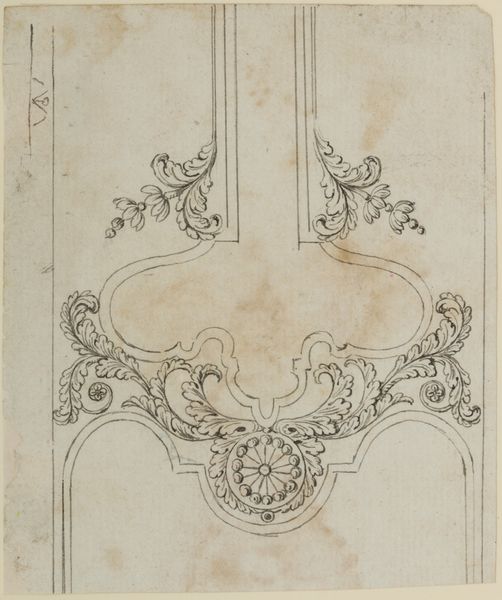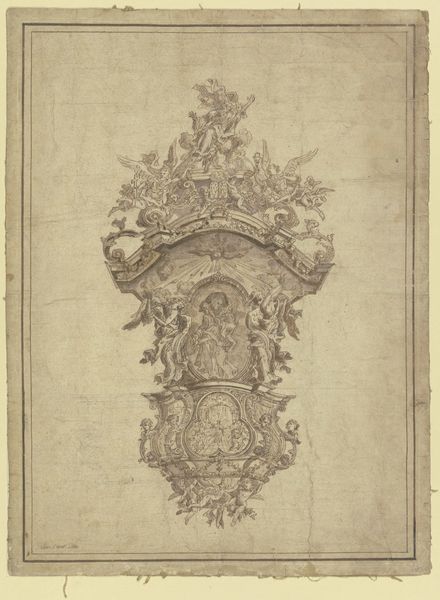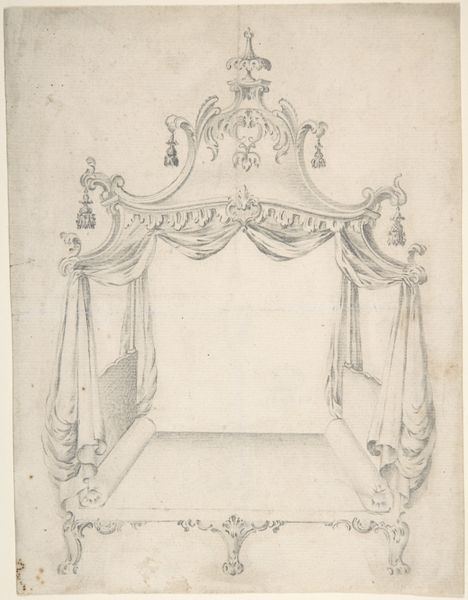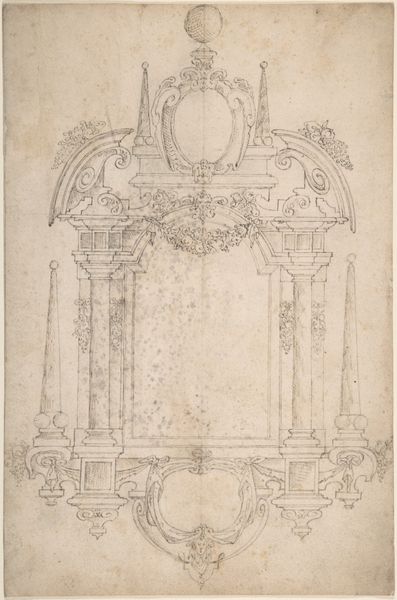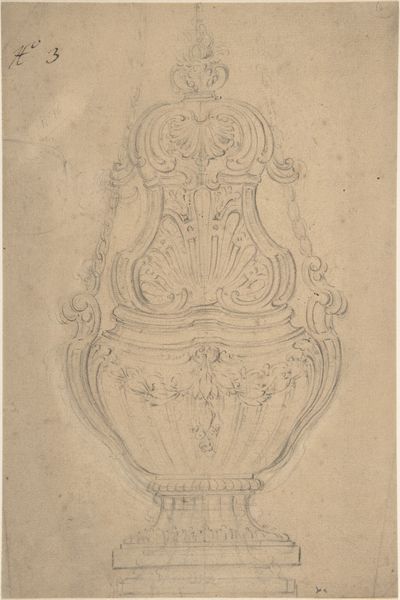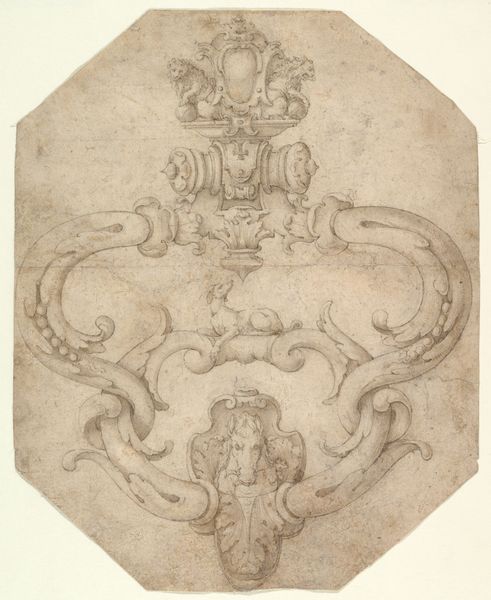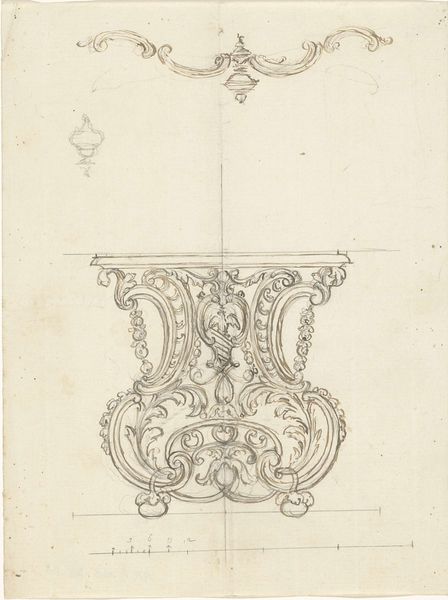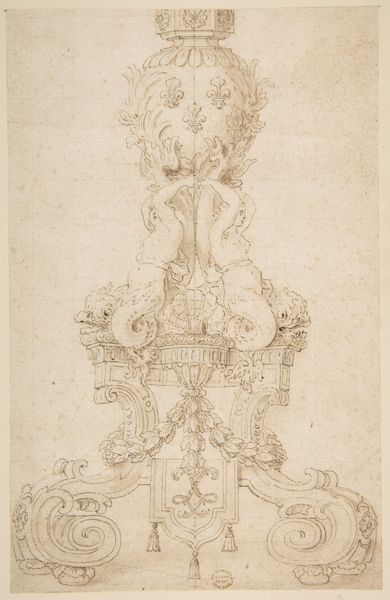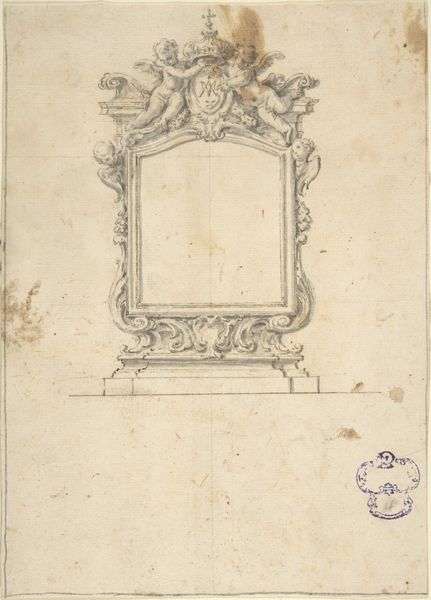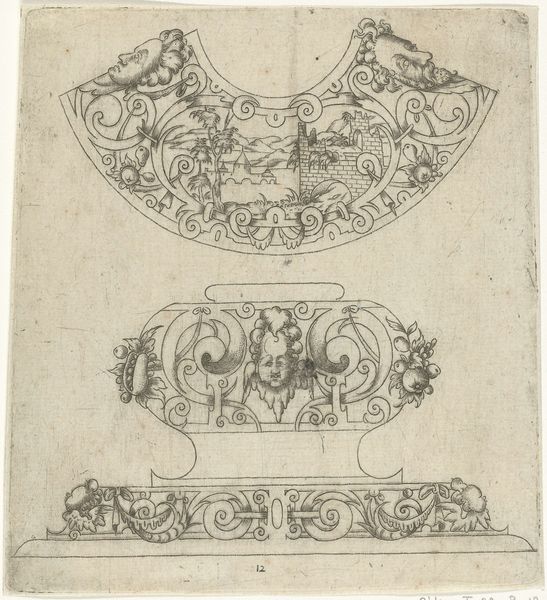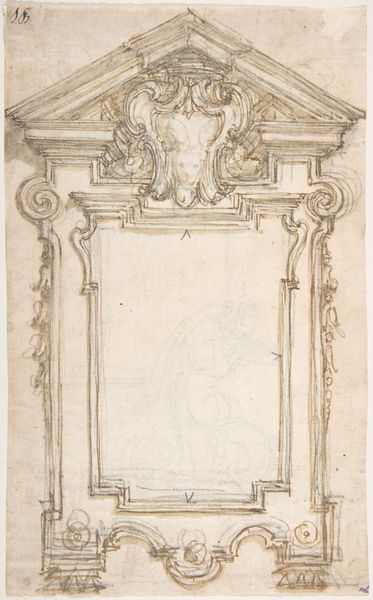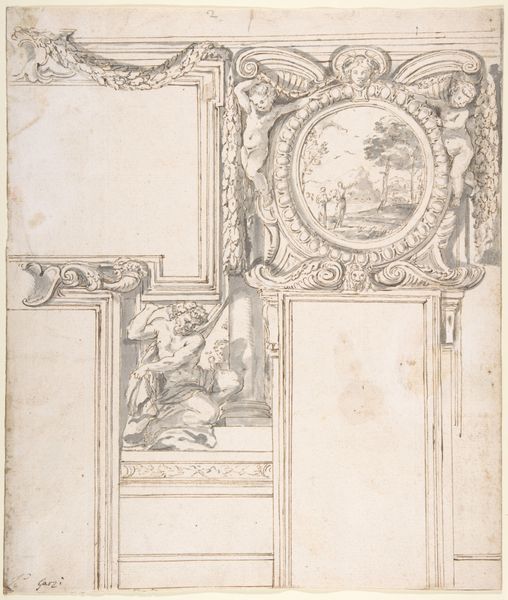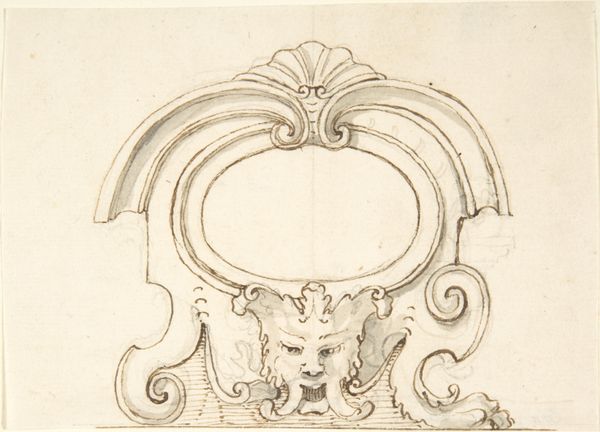
Design for a Tomb of Epitaph (recto); An Unfinished Variation of a Tomb or Epitaph (verso) 1652 - 1725
0:00
0:00
drawing, print, pencil
#
portrait
#
drawing
#
baroque
# print
#
vanitas
#
pencil
#
history-painting
#
miniature
Dimensions: sheet: 9 7/16 x 8 1/8 in. (23.9 x 20.7 cm)
Copyright: Public Domain
Editor: This delicate drawing is a design for a tomb, sketched by Giovanni Battista Foggini sometime between 1652 and 1725. It’s at the Met in New York. I notice the skull right at the top, amidst all the swirling ornamentation, giving the piece a rather dramatic, Baroque feel. What strikes you most about this design? Curator: What I find fascinating is the relationship between public and private grief that objects like these represent. It's not simply a personal expression of sorrow. The very *design* of a tomb becomes a performative act, doesn’t it? Editor: Performative how? Curator: Well, consider who gets commemorated, and how. This elaborate design, with its prominent portrait and skull, wasn’t meant for just anyone. This level of artistry and, frankly, expense was reserved for individuals of a certain status, reflecting power and patronage in Baroque society. Are you familiar with similar examples? Editor: I recall seeing similar examples from that era, but mostly paintings. I haven’t thought of tombs as carefully crafted to display social stature as well. I wonder how much input the family of the deceased would have on the design. Curator: An excellent point. Family input, religious conventions, and even political considerations would influence the artist. Foggini, as a sculptor, had to navigate these forces to secure commissions. Notice how even this preliminary drawing conveys not only loss but also a very deliberate image of the deceased, crafted for public consumption. Editor: It reframes my understanding of how social standing has been showcased through artistic expression, literally carved in stone, and helps me contextualize the role of art. Thank you for broadening my understanding of art's societal reflection. Curator: Indeed. And, in turn, your questioning sheds light on how we today, in the 21st century, receive these carefully constructed visual statements. A tomb then becomes a monument for future audiences, a reflection on how society remembers.
Comments
No comments
Be the first to comment and join the conversation on the ultimate creative platform.
